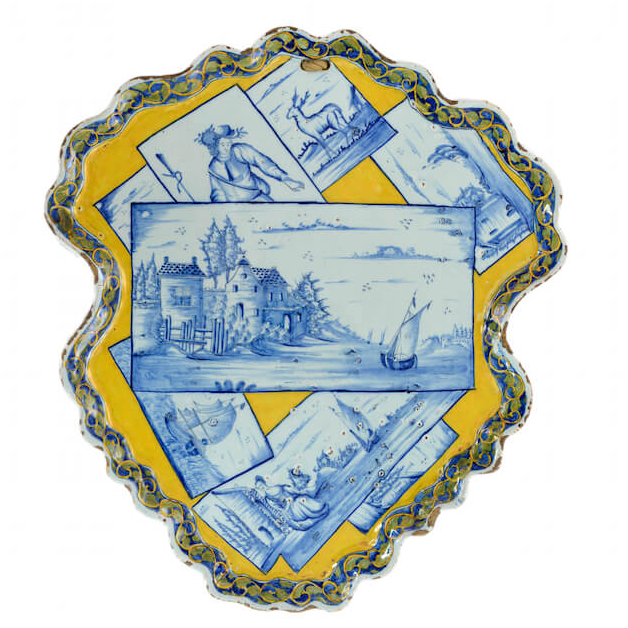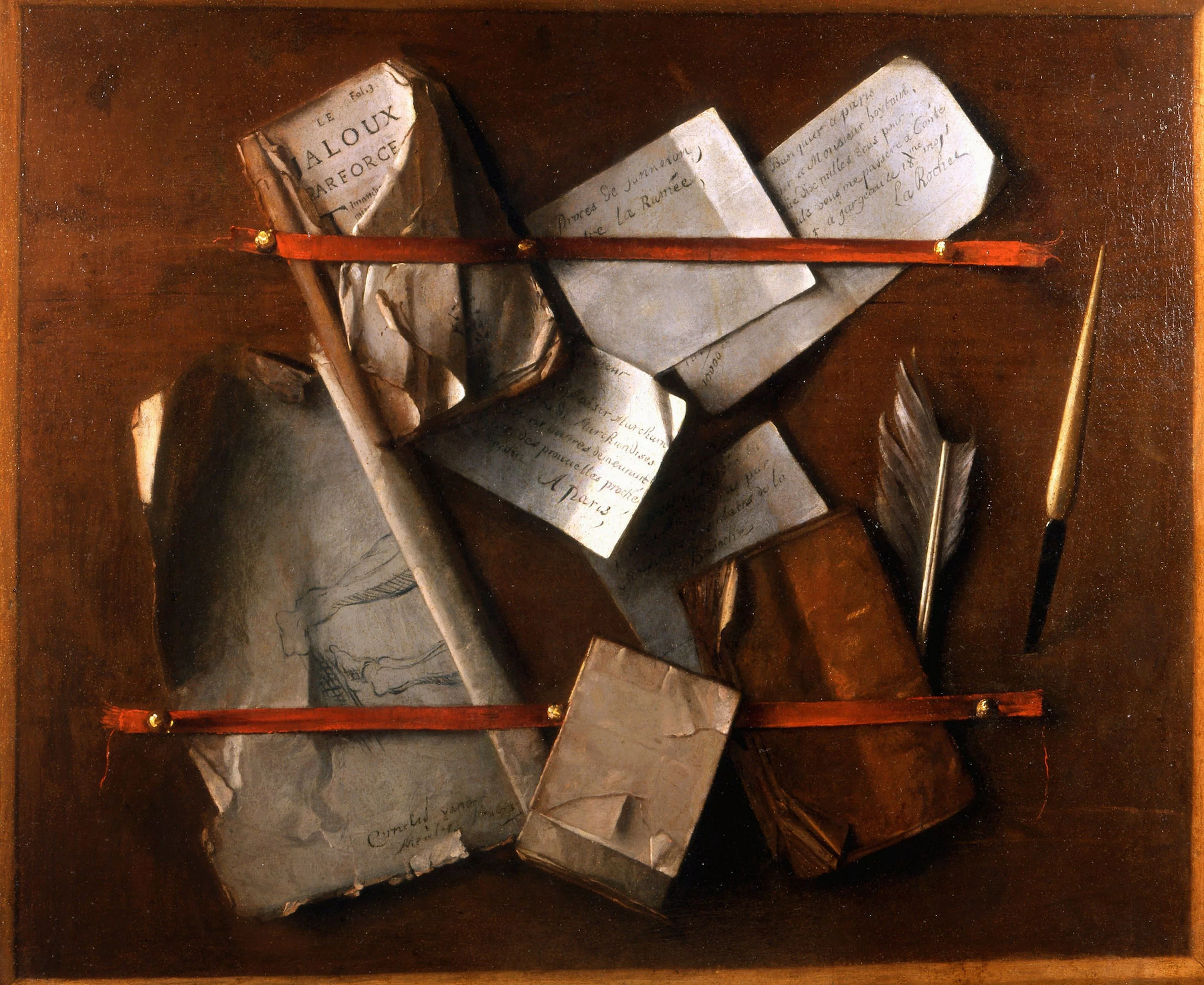
Polychrome Shield-shaped Plaque
Every month we present you a special object from the Aronson Antiquairs’ collection. This month, we would like to show you this polychrome shield-shaped plaque from circa 1760.
 This plaque is a great example of the trompe l’oeil (deceive the eye) technique. “A trompe l’oeil is meant to create an optic illusion. Already in the Roman period, people enjoyed being deceived with art. In the remains of Pompeï trompe l’oeils have been discovered. For example on a wall, depicting a painted window with a view on an imaginary garden.”
This plaque is a great example of the trompe l’oeil (deceive the eye) technique. “A trompe l’oeil is meant to create an optic illusion. Already in the Roman period, people enjoyed being deceived with art. In the remains of Pompeï trompe l’oeils have been discovered. For example on a wall, depicting a painted window with a view on an imaginary garden.”
The blue and white rectangular images of sea and landscapes painted on the yellow ground resemble postcards or tiles scattered atop a plaque. While the painter certainly demonstrated artistic license in the detailed compositions, they are most likely based on prints, either collected by the potteries for use in its ceramics, or supplied by a client for a special commission. Various types of prints were available to Delft artists during the seventeenth and eighteenth centuries, such as woodcuts, etchings, and engravings. It was not uncommon for artists and painters to freely borrow imagery from these print sources. The reuse of printed images both reflected and determined contemporary styles and tastes, as well as being instructive for the artisans.
“In The Netherlands it was painter and writer Samuel van Hoogstraten (Dordrecht, 1627-1678) who was the first to experiment with the trompe l’oeil technique in still life painting. In his ‘Inleyding tot de hooge schoole der schilderkonst uit 1678’ he advises young painters to focus on painting flat objects on flat surfaces. His pupil Cornelis van der Meulen (1642-1691/92) was one of the artists who followed his advice. With success. His high quality trompe l’oeil work brought him to Stockholm, where he became a painter at the Swedish court.”

For Delft potters, they probably took inspiration from seventeenth and eighteenth century still life paintings as from Samuel van Hoogstraten and Cornelis van der Meulen, among many others, with highly realistic details such as notes, drawings, and letters. As can be seen on this plaque, the overlapping scenes with depth and realism create an optical illusion. The composition and subject are reminiscent of the popular Delft dishes and bowls painted with playing cards. One such plate is illustrated in Lahaussois 1994, p. 80, no. 99, who comments on p. 96 that it was the Delft potters who can be credited with the idea of trompe l’oeil decoration of playing cards on ceramics, a style that became popular in the Netherlands from about 1730. It continued in popularity particularly on French faience throughout the second half of the eighteenth century, and on faïence fine (refined cream-colorer earthenware) and English porcelain in the early nineteenth century.
Polychrome Shield-shaped Plaque
Delft, circa 1760
Painted on the yellow ground with several blue and white overlapping rectangular images of sea- and landscapes, a hunter and a deer, the scalloped rim with foliate scrolls in yellow, green and iron-red against a blue ground.
Height: 37.8 cm. (14.9 in.)
Price: € 24.000 (Export: USD $ 25,000*)
(Link to webshop)
(*) export prices denote shipment organised by us outside of the European Union, price excluding packing and shipping, please contact us for details.



